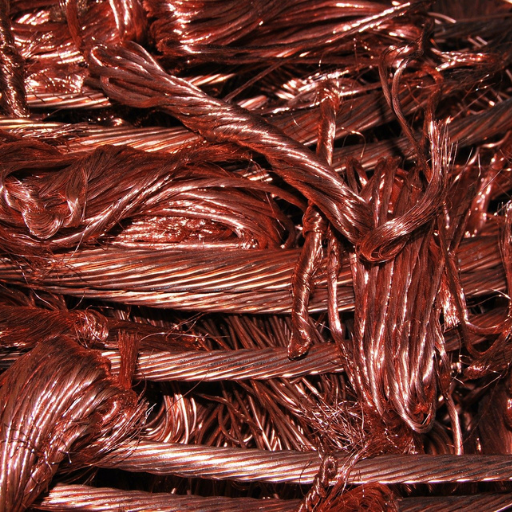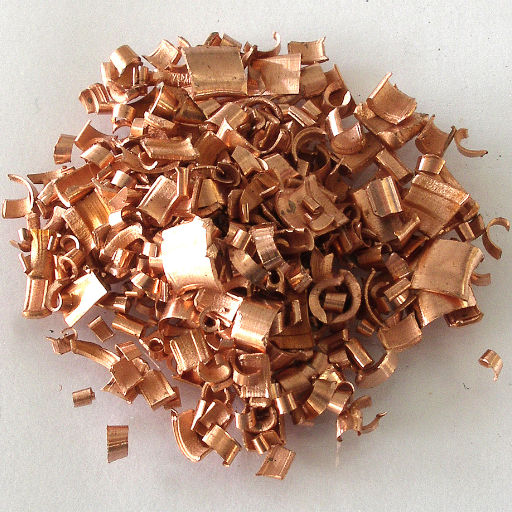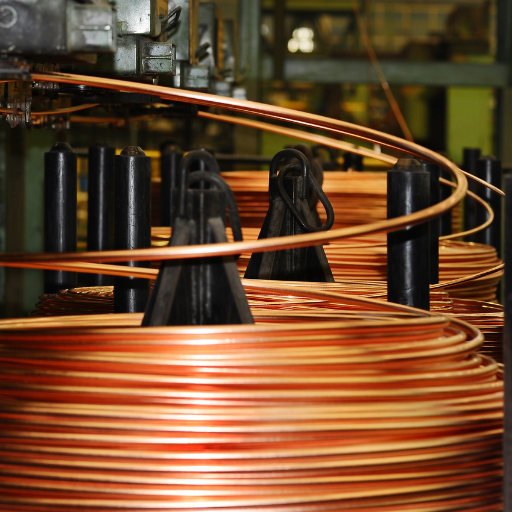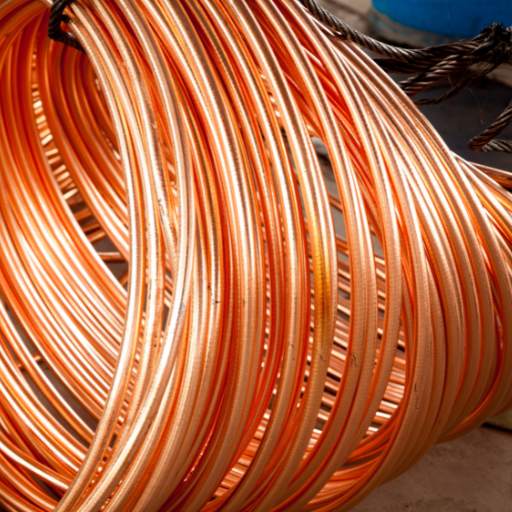One property that copper has which is highly valued and it has been for a long time is its amazing ductility. Copper’s excellent electrical and heat conductivity combined with its ductility makes the material indispensable in many industries. The versatility and reliability of this metal have no comparison ranging from ancient civilizations using copper for tools and ornaments to modern applications in electronics and construction. This blog will look at the scientific aspect behind copper’s unique properties, its various applications, and why it still matters a lot in society today. This article seeks to give an exhaustive account of why copper remains critical to modern innovation whether you are a student, professional in the field or are simply curious about the materials that shape our world.
What Makes Copper So Ductile?

One of the reasons why copper is ductile is because of its atomic structure and bonding properties. In such a manner, in metal, every atom of copper is connected with another through a network of metallic bonds. These metallic bonds are composed of positively charged ion cores enveloped by a lake or sea of delocalised electrons. The presence of these free moving electrons allows atoms to glide past each other under stress without breaking the bond between them. Copper can be drawn into wires and easily molded due to this flexibleness at the atomic level, which makes it one among the most extensively used metals in electrical wiring as well as other industries.
Understanding Copper’s Atomic Structure
Copper’s atomic structure is characterized by face-centered cubic (FCC) lattice, which makes it highly ductile. Within this configuration, each copper atom has 12 equidistant neighbors that create a symmetric stable arrangement. It should be noted that these outermost electrons in the 4s subshell play an important role in electrical conductivity for copper atoms. So these electrons are moving freely throughout the metal creating therefore what can be referred to as “sea” responsible not only for great electrical conductance for copper but also making it able to perform deformation without any fracture appearance. As far as mechanical stress goes, however, this atomic arrangement combined with metallic bonding helps copper retain its structural integrity hence serving many technological purposes simultaneously.
The Role of Grain Boundaries in Copper
Its mechanical properties are significantly determined by copper’s grain boundaries, which in the metal are usually areas where crystals of unlike orientations meet. These are able to hinder dislocation glide thereby increasing the materials strength. Grain boundaries can however sometimes trigger corrosion and other forms of decay that may arise. Electric wiring for example, requires high ductility and good electrical conductivity whereas fewer grain boundaries are often preferred and these can be achieved by annealing processes which increase grain sizes and therefore enhance copper’s general performance. Through this understanding, industrial needs can be met since optimization of copper’s properties is possible by manipulating these interfaces.
Why Copper is Ductile Compared to Other Metals
The unique structure of copper and its bonding are the reasons behind its being ductile. Copper has metallic bonds that make it possible for atoms to slide past each other without disrupting the entire lattice, thus enabling great flexibility and cohesion in the process through having a “sea of electrons.” It is worth noting that while most metals have very rigid atomic arrangements, copper’s crystal lattice is face-centered cubic (FCC) thereby meaning it possesses more slip systems making it easy to deform under tensile stress without breaking. In addition, fewer barriers to dislocation movement such as low grain boundaries when properly processed also contribute to copper’s extraordinary ductility relative to other metals. These factors make copper an attractive option for applications that require high malleability and toughness.
How Does Temperature Affect Copper’s Ductility?

Considering the influence of temperature on copper’s ductility, it is important to note that high temperatures usually aid in the plastic deformation process. At high temperatures, there is an increase in atomic vibrations which may result in a decrease in metal yield strength and facilitate dislocation movement within crystal lattice. This increased atomic activity permits copper to be stretched or bent with less tendency to break. On the other hand, copper becomes non-malleable at very low temperatures as a result of limited dislocation glide. Therefore, temperature greatly determines the ductility and mechanical behavior of copper for different purposes.
Effects of Low Temperature on Copper Ductility
The ductility of copper markedly decreases at low temperatures because dislocations are hindered in their movement across the crystal lattice. At these lower temperatures, there is less thermal energy, which means that atoms move less through vibrations and this raises the yield strength of the metal and hampers dislocation motion. Hence, copper becomes more brittle and is more prone to crack propagation. This brittleness tendency and reduced malleability necessitate caution when using copper for applications exposed to extremely low temperatures.
The Impact of Heat Treatment on Ductile Metals
Microstructure and mechanical properties of metals including copper are profoundly altered by heat treatment as claimed by leading sources. Annealing, quenching and tempering processes form an integral part of heat treatment techniques. Ductility is normally enhanced by annealing whereby recrystallization of the metal occurs eliminating work hardening effects thus reducing internal stresses. Quenching involves rapid cooling or fast cooling from high temperatures which can increase hardness but can decrease ductility unless tempered subsequently. Tempering is where the quenched metal is reheated to moderate temperature then cooled allowing for some ductility while maintaining specific hardness levels desired. These heat treatments allow for controlled heating and cooling sequences that tailor copper among other ductile metals for specific purposes considering factors such as strength versus flexibility balance for maximum efficiency.
Annealing and Its Role in Enhancing Ductility
Annealing is an important process of heating treatment which greatly enhances the malleability of metals including copper. During annealing, the metal is heated to a certain temperature at which there is recrystallization followed by controlled cooling. Such a step removes internal stresses, decreases dislocation density and makes it possible to refine grain structure, upgrading the plastic deformability of metal without rupture. Annealing usually causes the metal to be softer and more ductile than before, making it easier to work with and less vulnerable to cracking during further processing (leading sources state). Thus, it is often used in applications needing improved flexibility and toughness as well as operations aimed at restoring ductility following hardening.
What Are the Key Mechanical Properties of Copper?

Copper is very useful in many different ways because it has many important mechanical properties. Copper also has high electrical conductivity and good heat transfer ability required for making electric cables and heat exchangers. Moreover, copper material is also admired for its high malleability hence may be drawn into fine wires or beaten into sheets without fracturing. It also has good tensile strength that makes it capable of withstanding pulling forces and well-established corrosion resistance to chemicals and weathering. All these features further enhance the mechanical performance of copper due to its capacity to create alloys with other metals thus increasing the range of industries where its applications can be extended.
Tensile Strength and Ductility in Copper
Copper’s tensile strength and ductility are among its most well-known mechanical properties, which makes it necessary for use in various engineering and industrial applications. Tensile strength is the maximum stress that copper can withstand before breaking while being stretched or pulled. Based on recent reliable sources, pure copper generally has a tensile strength of about 210-300 MPa, which adequately resists stretching forces in most practical situations.
However, ductility represents the ability of copper to undergo plastic deformation without fracturing under tensile stress. The excellent ductility of copper is manifested in its capability to be drawn into thin wires or beaten into sheets. This is largely due to its face-centered cubic (FCC) crystal structure which permits relative sliding motion between adjacent atoms of copper along specific crystallographic planes. Its high ductility allows it to be heavily shaped during manufacturing processes such as drawing, extrusion and forging without losing its mechanical integrity and functionality.
Understanding Elongation and Plastic Deformation
Ductility is shown in elongation, which means that copper can be stretched to some distance before it breaks. According to the best references, pure types of copper experience elongation ranging from 30 % to 40 %. It follows that such highly elongative metal as copper can undergo a significant plastic deformation without cracking which makes it very useful for extensive shaping processes.
A permanent change in shape or size of copper resulting from stress within its elastic limit is called plastic deformation. Thus, deformation is favored in copper’s fcc crystal structure because this allows atoms to move and reorganize easily under stress. That explains why copper is ideal for deep drawing and bending procedures since they require materials that will retain their shapes when reshaped extensively.
Comparing Pure Copper vs. Copper Alloys
Comparing pure copper and copper alloys, several crucial differences greatly influence their applications and performance characteristics. Pure copper is known for its excellent electrical and thermal conductivity, so it is commonly found in electric wiring, electronic devices or heat exchangers. Additionally, its great malleability and resistance against corrosion enable it to be used in the creation of complex parts that undergo extensive shaping.
On the other hand, copper alloys such as bronze (copper/tin) and brass (copper/zinc), gain improved mechanical properties through alloying. For instance, bronze is widely known for its strength and durability especially when used for wear resistant applications like bearings, bushings or gears. However, brass combines fair machinability with average strength and a certain degree of resistance to corroding agents thus making it useful in plumbing fittings, ornaments in the houses among others.
Copper-nickel alloys are also worth mentioning especially where superior corrosion resistance is essential particularly in marine environments. These provide better seawater corrosion resistance than pure copper while maintaining good thermal conductivity.
In conclusion however pure copper has excellent conductance properties as well as flexibility; these same materials have been specifically made to suit specific requirements for strengthening purposes like wear-resistance as well as ability to resist acid attack thereby providing broader application over various industries.
How Does Copper’s Ductility Affect Its Applications?

Copper’s ductility, which refers to its ability to undergo extensive plastic deformation before breaking, heavily influences its range of application. This property makes it possible for copper to be made into thin wires without breaking them, making it ideal for electrical wiring and telecommunications cables. Besides, the material can also be easily shaped under stress hence enabling production of delicate elements found in electronics, plumbing and jewelry. Additionally, ductility ensures that copper based components can withstand mechanical strain therefore ensuring their long life in service. Copper’s ductility therefore is an important characteristic underlying its wide range of uses and versatility across various industries.
The Use of Copper in Electrical Conductivity
The high conductivity of copper makes it desirable for electrical wiring and components. Copper is the highest-rated non-precious metal in terms of electrical conductivity which allows efficient transmission of electricity with minimum loss. It leads to lower energy consumption in electrical systems and improved performance overall systems’ function. Beyond this, copper does not rust or decay thereby making it more suitable than other metals as a medium for transmitting electric power over long periods without fault. On this account as got from reliable websites such as Zapp Precision Metals; The Copper Development Association; Metal Supermarkets among others with consensus on these facts supports my statement about copper being one of the best performing materials due to attributes such as high conductivity balance with durability and ease of installation especially within electric systems.
Copper’s Role in Heat Exchangers
The good thermal conductor ability of copper makes it widely used in heat exchangers, enabling efficient heat transfer across different types of systems. Its excellent thermal attributes permit fast heating and cooling rates making it the choice material for elements like radiators, condensers, and evaporators. Moreover, Copper is an alloy that is naturally resistant to corrosion which ensures that it lasts long even if used under harsh conditions like HVAC systems as well as industrial applications. Furthermore, being ductile and easy to fabricate into shapes make copper manufacture complex features crucial in optimizing heat exchange processes. All these characteristics make copper essential in the production of heat exchangers thus emphasizing its significance towards maintaining thermal systems within various industries.
Durability and Malleability in Everyday Applications
The unchanging strength and pliability of copper make it a definite element in the everyday use. It is tough which makes it efficient for plumbing and roofing basing on the fact that both have to endure harsh weather conditions. Copper Development Association (CDA) among other top sources claims that this quality makes copper pipes last longer hence becoming less frequently replaced. Furthermore, copper can be bent without breaking as it is ductile making it suitable for fine arts and jewelry involving complex pieces as well as practical goods like cookware and electrical wiring. This blend of resilience and adaptability shows how indispensable copper is in various fields of activity on a daily basis.
How Are Tensile Tests Conducted on Copper?

For the evaluation of copper’s mechanical properties, its strength, ductility and elasticity, tensile tests are performed. Typically involving the usage of a standard size test bar which is made from copper and put into a machine that pulls it in one direction i.e. uniaxial force; this is what is meant by tensile testing of copper. At this point, the machine starts increasing the distance between its jaws and at each stage of elongation force applied to pull apart specimen is measured with precision. The ultimate tensile strength, yield strength and elongation at break are some key metrics obtained from tensile testing. This helps to establish if copper can be used for different applications and whether or not it meets industrial standards or specifications.
Understanding the Tensile Test Process
The process of tensile testing involves a number of steps that enable accurate determination of the tensile properties of the copper object. At first, the specimen is prepared and mounted in the machine for tensile test to ensure that it is aligned properly so as to avoid misalignment errors. The machine then pulls on the specimen using an uniaxial force which stretches it slowly at a controlled rate. During the test, sensors record data in real-time for applied force and elongation values. The ultimate measurements provide important mechanical properties:
- Ultimate Tensile Strength (UTS) – This is the maximum stress which material can withstand when being pulled.
- Yield Strength – It is where material starts plastically deforming.
- Elongation at Break – This tells how much material can be stretched before breaking.
Such precise data helps in meeting the required industry standards for copper materials thereby ensuring their dependability and performance in various applications available.
The Importance of Yield Strength and Ultimate Tensile Strength
In materials science and engineering, Yield Strength and Ultimate Tensile Strength (UTS) are two key measures for evaluating the performance and durability of copper among other such materials.
Yield Strength is very crucial as it indicates the point at which a material begins to deform plastically. That is, at this stage, the metal will not return to its original shape; this helps in understanding how much load a thing can bear before it starts undergoing permanent or irreversible deformation. This value is important to engineers and designers as it ensures that structures or components can withstand operational loads without suffering from any permanent damages.
Ultimate Tensile Strength (UTS) describes the maximum stress that a material can undergo while being stretched or pulled before tearing apart. It is an important determinant of overall strength and toughness of a material. Knowledge of UTS is therefore necessary when designing materials that will be subjected to high loads so that they do not fail catastrophically under reasonable loads.
They assist in appraising suitability for practical applications in various fields by ensuring safety, effectiveness, longevity in construction, manufacturing and other engineering firms. Precise measurements of Yield Strength and UTS guarantee compliance with industrial norms and enable functioning even under particular conditions.
Interpreting Results from Tensile Tests
Understanding the different ways various materials respond to applied stress is vital in interpreting results from tensile tests. These tests provide some key parameters such as:
- Elastic Region: This first segment of the stress-strain curve shows how a material behaves elastically, when it can regain its original dimensions once the load is removed. The slope of this portion is known as Young’s modulus or modulus of elasticity.
- Yield Point: Yield strength of a material which indicates when plastic deformation begins occurs at this point. Beyond this state, any changes in shape are irreversible—a condition necessary for applications involving high resistance under loads.
- Ultimate Tensile Strength (UTS): It is a maximum stress experienced by the material under stretching or pulling and appears as a peak on a graph line representing the process according to Hookes law. This value reflects the fact that materials are able to withstand forces applied to them without breaking.
- Fracture Point: Following UTS, material’s strength falls off until it fails. The location of fracture implies that no further loading should be applied along that axis.
In proper interpretation, engineers need these findings so as to enable them make successful decisions concerning what kind of materials should be used depending on their specific performance requirements—thus ensuring both safe and efficient designs.
Frequently Asked Questions (FAQs)
Q: What are the key properties of copper that contribute to its widespread use?
A: Copper is highly ductile, malleable, and has high electrical conductivity. These properties make it an ideal material for various applications including electrical wiring, plumbing, and industrial machinery. Copper and its alloys are known for their strength and versatility.
Q: How does the physical property of being highly ductile benefit copper in industrial applications?
A: The high ductility of copper allows it to be drawn into thin wire without breaking, which is essential for creating copper wire used in electrical and communications systems. This property also enables copper to be shaped and molded into different forms, enhancing its utility in manufacturing and construction.
Q: What is the significance of grain size in determining the properties of copper?
A: Grain size plays a critical role in the strength and ductility of copper. Finer grain sizes generally enhance the strength and toughness of copper, making it more resistant to damage under mechanical stress. Adjusting the grain size can tailor the material properties for specific applications.
Q: How does copper compare to aluminum wire in terms of electrical conductivity?
A: Copper has a higher electrical conductivity compared to aluminum wire. This means that for a given diameter and length, copper wire can carry more electrical current than aluminum wire, making it more efficient and preferred for high-performance electrical applications.
Q: What are the metallurgical processes involved in enhancing the properties of copper and its alloys?
A: The metallurgy of copper involves processes like solid solution strengthening, work hardening, and alloying. These methods improve the mechanical properties and performance of copper and copper alloys, making them suitable for a broader range of industrial uses. Adjusting the composition and processing conditions can achieve desired attributes.
Q: In what ways does the European Copper Institute contribute to the copper industry?
A: The European Copper Institute promotes the benefits and applications of copper through research, education, and advocacy. They provide valuable resources on the properties of copper, its uses in modern technology, and advancements in the industry, supporting innovation and sustainability in copper use.
Q: Can you explain the difference between brittle and ductile behavior in metals like copper?
A: Ductility is the ability of a material to deform plastically without breaking, whereas brittleness refers to a material’s tendency to fracture without significant plastic deformation. Copper is known to be a highly ductile metal, which allows it to bend and stretch under stress without breaking, unlike more brittle materials.
Q: How is copper demand affected by its unique properties?
A: The high electrical conductivity, malleable and ductile nature, and corrosion resistance of copper drive its high demand in various industries including electronics, construction, and transportation. These properties make copper an essential material in modern infrastructure and technology.
Q: How is ductility measured in copper and why is it important?
A: Ductility is measured by the extent to which copper can be deformed under tensile stress, often indicated by parameters such as elongation and reduction in area. This measurement is crucial for determining the suitability of copper for different applications where flexibility and resistance to fracture are important.
Q: What are some common products made from copper and its alloys?
A: Common products include electrical wiring, plumbing pipes, roofing materials, industrial machinery components, automotive radiators, and heat exchangers. Copper and its alloys are also used in coinage and decorative items due to their aesthetic appeal and durability.





